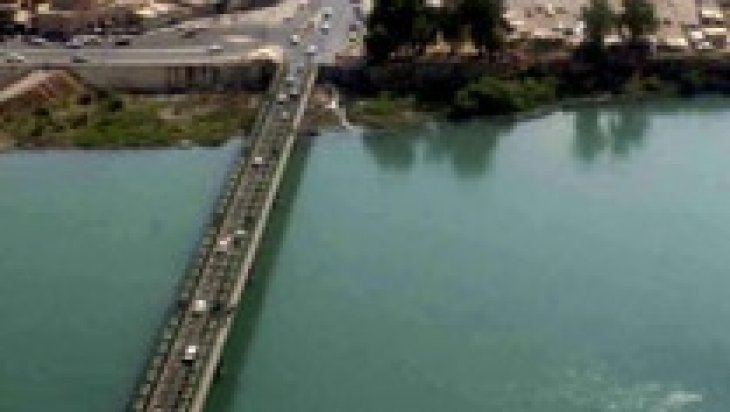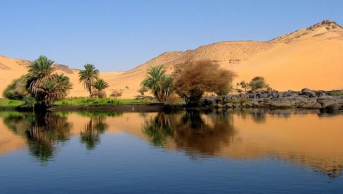Three Decades after Three-Stage Plan: Time for a Reappraisal

In 1984, after several years of tri-partite negotiations among riparians of the Euphrates-Tigris watercourse system namely Iraq, Syria and Turkey within the context of Joint Technical Committee; Turkish authorities came with a proposal of a comprehensive plan (indeed, the most comprehensive plan hitherto proposed in the context of transboundary water allocation in the Euphrates-Tigris river basin), which was called “Three Stages Plan for Optimum, Equitable and Reasonable Utilization of the Trans-boundary Watercourse of the Euphrates Basin”, or shortly Three-Stage Plan. Now, after more than three decades, it has been understood that the Plan has a validity well beyond the time it was proposed.
The cooperation attempts among the Euphrates-Tigris riparian countries gained momentum when Iraq proposed the formation of a permanent Joint Technical Committee (JTC). Thus, in 1980, the JTC was established to discuss and -if possible- finalize the water issue among the riparians. It convened in 1982 for the first time. Syria joined the JTC in 1983 and three countries continued to negotiate thereafter, until the failure on finding a common terminology, indeed the common grounds of negotiations in 1993. One of the significant outcomes of the JTC process was the proposal of Three-Stage Plan by Turkey in the 1984, during the fifth meeting of the JTC.
It makes the optimal use and allocation of the Euphrates and Tigris waters as its key aim. The main line of argument in the Plan is related with efficiency of irrigation schemes and other climatic and geographic (soil types in particular) factors affecting water needs.
According to the Plan, the Inventory Studies of Water Resources is the first stage. In this phase, the exchange and examination of available data, joint measurements, the estimation of water uses and losses, the calculation of natural flows, etc. would be realized. Inventory studies of land resources, i.e. soil conditions and quality, crop patterns, irrigation requirements etc. would be the second stage. These two stages combined would pave the way for the third stage.The third stage is Evaluation of Water and Land Resources, which would be based on the previous studies, aimed at assessing the water needs of competing sectors. Water allocation would be done according to these needs. The modernization and rehabilitation of ongoing projects, the improvement of irrigation, the determination of the total water consumption, demand, and the economic viability of planned projects were among the benefits to be harvested.
The Plan is primarily based on two assumptions. First, the Plan takes Euphrates and Tigris as a single transboundary watercourse system. This idea could be justified through the interconnectedness of two rivers into Shatt Al Arab which constitutes the final 160-180 km of the Euphrates-Tigris river system. Also, Thartar canal system makes two rivers connected. Finally, the area south of Baghdad is so flat that it is nearly impossible to delimit the exact boundaries between Tigris and Euphrates watersheds.
Secondly, according to the Plan, a joint scientific study determining the actual water needs of each riparian state is a prerequisite for an equitable, rational and optimal utilization of the Euphrates-Tigris water. This assumption necessitates the collection and sharing of joint data.
Both Iraq and Syria rejected the Three-Stage Plan on the ground that the Plan was nothing more than a mere reflection of the position of Turkey which claims that Euphrates an Tigris rivers constitute a “single” and “transboundary” river basin. Iraq and Syria were also critical of the idea of the (re)evaluation of the efficiency of agricultural practices, including irrigation. Two countries were aware of the fact that their irrigation schemes are not adequately efficient. Another argument was that the Plan was interfering with the sovereign rights of the riparians.
The Three-Stage Plan, indeed, has proposed a comprehensive evaluation of water and land resources with an aim of optimal, rational and equitable water allocation which would based on not only the supply-related data, but also on determination of just demands. In this respect, the Plan has a holistic and integrated approach. This kind of an approach is frequently recommended in recent decades by numerous international institutions in many international fora. For instance, the Integrated Water Resources Management Paradigm, as it name suggests, is basically founded upon the principle of “integration”. As a second example, the Water Framework Directive (WFD) of the European Union adopts a similar understanding: “It is necessary to develop an integrated Community policy on water” (Recital 9, WFD). And as a third example, Nexus approach also calls for a new thinking based upon the interconnectedness of water, food and energy. Another significant feature of the Plan was the recognition of the central role of data sharing and calibration activities which are also seen as an indispensable element in a sound water management system. Finally, the implementation of Plan may reduce wasteful use of scant resources in the region which would indirectly have a positive effect in environmental sense. Thus, the Three-Stage Plan is compatible with what has been proposed in water management circles in recent years.
In short, it is high time to take the Three-Stage Plan out of the freezer and rethink its applicability in the Euphrates-Tigris transboundary basin. Growing impacts of climate change is making it mandatory for all basin countries to focus on water management issues from an unbiased and scientific perspective.











